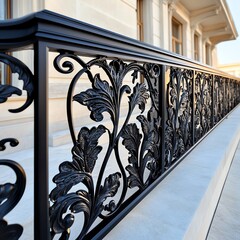Concrete plays a key role in commercial construction, from skyscrapers and parking structures to warehouses and industrial complexes. Among its most important attributes is strength.
Unlike residential concrete, commercial concrete must withstand heavier loads and environmental factors. This requires higher compressive strengths, often achieved through precise mix designs and quality control measures. Go to this website at https://www.gkconstructionsolutions.com/ for more information.
Strength

Concrete is the most widely used material in the world, and it’s essential for commercial projects that need to stand up to heavy loads and constant use. Commercial concrete construction includes the foundations, tilt walls and flooring that support office buildings, warehouses, retail stores and industrial facilities. This type of concrete work requires a high degree of precision, planning and strict adherence to building codes and safety standards.
When it comes to durability, few materials match concrete’s ability to withstand adverse weather conditions and heavy loads. Properly designed and constructed, a concrete structure can withstand decades of continuous use without damage or structural issues. This durability translates to reduced maintenance costs and improved energy efficiency over the life of the structure.
In addition to innate strength, concrete is also one of the most fire-resistant construction materials available. This feature is especially important for office towers, schools and hospitals, which must rely on their structures to protect property and limit the spread of flames during a fire. Concrete’s fire-resistant properties help keep people safe and save valuable equipment, as well as minimize evacuation times and downtime.
Commercial concrete also has a high level of versatility, making it an ideal choice for a variety of architectural applications. It can be molded to create curved facades and other unique design elements, while blending seamlessly with modern architecture’s aesthetic requirements. It’s also possible to incorporate sustainable concrete solutions into commercial projects, such as those that incorporate recycled materials or use low-carbon cement.
Unlike residential concrete, commercial projects often require larger quantities of concrete to meet engineering and load-bearing specifications. Using precast concrete allows for these larger volumes to be manufactured off-site in a controlled environment, reducing labor costs and improving project schedules. It also ensures consistent quality and eliminates the need for waste, which supports green construction practices.
Achieving streamlined project timelines is crucial for minimizing costs and enhancing productivity on construction sites. This can be accomplished by focusing on effective planning and utilizing ready-mix concrete, which is mixed in a factory-controlled setting and delivered to the site. This reduces the need for on-site mixing, allowing you to streamline scheduling and optimize resources while ensuring that each phase of the process is completed on time.
Durability
Concrete has long been a favorite building material due to its unparalleled strength and durability. It is incredibly resistant to heavy loads, extreme weather conditions, and pests. It also requires minimal maintenance and can last for decades or even centuries.
Commercial concrete is an excellent choice for construction of larger buildings, as it can withstand immense weight without sacrificing structural integrity. It is poured in layers, which helps distribute the load evenly and minimises localised stress concentrations. This is particularly important for commercial buildings, which often have high occupant counts and heavy equipment. It is crucial to ensure that the commercial concrete used in your project meets industry standards and undergoes quality control processes, including slump tests and compressive strength testing.
Compared to other construction materials, concrete is also very cost-effective. Its inherent durability means that it is unlikely to require costly repairs or replacements, which significantly reduces your overall project costs. Additionally, it is a highly versatile material, allowing architects and engineers to create innovative designs that enhance a structure’s aesthetic and functionality.
In addition to its unmatched durability, commercial concrete is highly adaptable to a variety of environmental conditions. For example, if your project is located in an area prone to freeze-thaw cycles, you can add air-entraining agents into the concrete mix to prevent cracking. Commercial concrete can also withstand fires better than wood or steel, protecting the safety of your building’s occupants.
The durability of commercial concrete extends beyond the walls, floors, and exterior pavements of your business. It is frequently used in the foundations of commercial projects, as well as in precast elements like beams and slabs. This is because of the material’s ability to withstand the weight and vibrations of heavy machinery and vehicles.
With sustainability becoming a focal point in the construction sector, commercial concrete is an ideal choice for projects that seek to minimize their carbon footprints. It can incorporate recycled materials, such as fly ash and slag, into its mix, which reduces both energy consumption and waste. Additionally, it has thermal mass properties that can help regulate indoor temperatures, reducing the need for energy-intensive heating and cooling systems.
Aesthetics
Concrete construction is a versatile material that can be used in a wide range of applications. It is comprised of powdered cement, water and aggregates such as sand or gravel that when mixed together and hydrated, creates an extremely strong and durable material. Concrete is also incredibly versatile and can be molded into unique shapes to meet specific project requirements. Additionally, concrete can be stained, polished or painted to achieve various aesthetic goals.
Commercial concrete construction focuses on building or enhancing business facilities, such as warehouses, retail stores and office buildings. Unlike residential concrete, commercial projects tend to involve much larger scales and more complex structural demands. These differences often require more advanced techniques, such as tilt-up wall construction or post-tensioned slab construction. During commercial concrete construction, it is important to use high-quality materials and ensure consistency throughout the pour. This can be achieved by using quality ready-mix concrete and constructing sturdy forms to contain the concrete during placement.
The durability and versatility of concrete make it ideal for commercial projects. It can withstand heavy loads and extreme weather conditions, and when properly mixed and poured, will last for decades with minimal maintenance required. Furthermore, concrete is environmentally friendly and energy efficient. Its thermal mass helps to regulate indoor temperatures, and when combined with green construction practices, such as incorporating recycled materials or low-carbon cement, can reduce the overall environmental impact of the structure.
For commercial projects, functionality and cost-efficiency are typically more important than aesthetics. However, decorative concrete is increasingly being used in office lobbies, retail spaces and hotel rooms to enhance the look of the space. It is also a popular option for exterior walkways and pavements, which can be stamped with patterns or colored to create a unique design.
While the concrete industry is growing at an unprecedented rate, it remains true that the demand for quality work exceeds supply. When choosing a contractor, it is important to choose one with extensive experience in the field and a commitment to customer satisfaction. Keeton Construction Services has years of experience in the concrete industry and offers the highest quality construction possible for any commercial or industrial project. Contact us today to discuss your project.
Sustainability
As the world strives to reduce carbon emissions, sustainable construction practices are becoming a necessity. Fortunately, concrete construction supports sustainability goals by utilizing a variety of eco-friendly materials and methods. Concrete itself is known for its durability and longevity, while also requiring minimal maintenance and repair, which helps reduce resource consumption and waste. Furthermore, concrete’s innate thermal mass helps regulate indoor temperatures, which can further reduce energy costs and greenhouse gas production. Additionally, recycling concrete reduces the need for new raw materials and diverts waste from landfills.
Lastly, the ability to mold concrete into a wide variety of designs and finishes allows architects and builders to create innovative structures with concrete. These unique design elements help to enhance building aesthetics, which is important for commercial buildings that need to stand out and attract tenants. In addition, precast concrete elements can be manufactured off-site in a controlled environment and then delivered to the construction site for assembly. This allows for more control over the quality of the materials, and helps to minimize transportation emissions.
Many construction projects aim to achieve LEED certification, a globally recognized standard that evaluates a building’s environmental impact and contributes to its overall performance. When used strategically, concrete can help meet LEED standards and earn credits for energy efficiency, indoor air quality and other factors.
Taking a holistic approach to sustainable construction, concrete utilizes a variety of eco-friendly materials, including recycled aggregates and fly ash, as well as natural cement alternatives like lime and sand. These materials can be sourced locally, helping to cut transportation emissions and support community economies. Additionally, advanced concrete mix design techniques can further reduce environmental impacts, including optimizing material selection and using life-cycle assessment to measure a project’s impact. Furthermore, emerging innovations, such as carbon-cure and bio-concrete technologies that use microbial activity to self-heal cracks, are pushing the industry closer to net-zero emissions targets.



